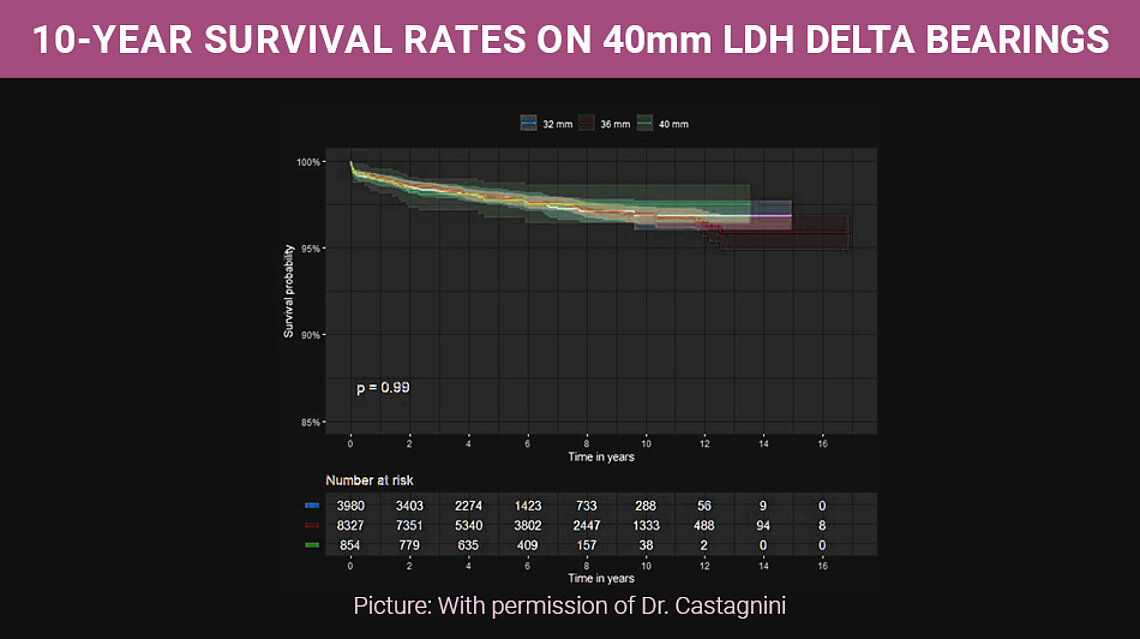Surgeons can expand their options with 40mm BIOLOX®delta CoC heads and bearings
More such evidence arises from a new Level IV therapeutic study by IRCCS Istituto Ortopedico Rizzoli ’s Francesco Traina et al., which analyzed the RIPO registry using BIOLOX®delta ceramic-on-ceramic implants. Grouped by head diameter (32, 36, and 40mm), over 13,000 primary cementless THAs for primary osteoarthritis were assessed in several areas:
1️⃣ Survival rates
2️⃣ Reasons for revision
3️⃣ Hazard ratios for failure
4️⃣ Hazard ratios for aseptic loosening, dislocation/primary instability, and liner failure
The three size cohorts demonstrated comparable survival rates (p = 0.99) and adjusted hazard ratios (p > 0.05) in many tests:
🔹 The 10-year survival rates for dislocation as an endpoint were comparable.
🔹 No head or liner failures were detected in the 40mm cohort.
🔹 No revisions for metallosis occurred.
Meanwhile, there were minor differences on other points:
🔹 With an endpoint of revision for cup aseptic loosening, all cohorts returned similar survival rates (p = 0.08) and adjusted hazard ratios (p > 0.05).
🔹With an endpoint of revision for dislocation/primary instability, the survival rates were similar (p = 0.08).
🔹With revision for liner breakage as the endpoint, the 32mm cohort returned higher rates of revision (p = 0.01).
While 40mm heads did not necessarily reduce revisions for dislocation / primary instability, they emerge from this data set as low-risk options that give surgeons greater freedom to tailor head and bearing sizes to their patients’ needs. The authors conclude that this study makes another strong case for the use of 40mm LDH BIOLOX®delta bearings.
Castagnini F, Bordini B, Cosentino M, Diquattro E, Gorgone M, Traina F. Head size in Delta ceramic-on-ceramic total hip arthroplasty: a comparative registry study. Arch Orthop Trauma Surg. 2024 Sep 3. doi: 10.1007/s00402-024-05504-1. Epub ahead of print. PMID: 39225803.
Picture: Permission of Dr. Francesco Castagnini
Please check for regulatory approval in your country: https://www.ceramtec-medical.com/en/regulatory-information

